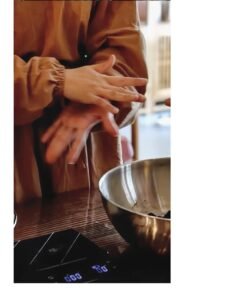How to Choose Between Incense Sticks and Incense Pills?

Both incense sticks and incense pills have their own advantages, and the choice depends on the space and personal preference.
- Incense Pills: Best used in small spaces because they offer a gentle aroma without smoke, allowing the natural fragrance of the materials to shine through.
- Incense Sticks: Ideal for larger spaces because they have a stronger scent. Though they produce some smoke, they are convenient and often used in temples.
- You can use both interchangeably depending on the occasion. Incense sticks offer a more intense fragrance, while incense pills are softer and more delicate.
Historically, people originally burned raw incense materials directly, and during the Tang and Song dynasties, incense burning (known as “Xunxiang”) became more common. By the Ming and Qing dynasties, incense sticks became the mainstream. However, I believe incense burning might make a comeback in modern life.
My Fragrance Blending Philosophy

Traditional Chinese incense blending is deeply rooted in Chinese cultural values.
“Blending incense” refers to both “merging” and “harmonizing,” with an emphasis on “harmonizing.” Harmonizing is about inclusion and balance, aligning with the natural flow of the universe. In incense blending, different materials are chosen to coexist harmoniously, reaching a balanced state.
When creating incense, I select natural herbs and follow principles from traditional Chinese medicine, considering things like the four elements, the five flavors, and the balance of Yin and Yang to ensure the fragrance is harmonized and balanced.
Choosing Incense Materials

The quality of the incense materials plays a crucial role in the fragrance. Incense materials are essentially medicinal herbs, so it’s important to source them from the best possible locations, whether it’s from the highlands of Tibet, the deserts of Gobi, tropical jungles, or the water towns of Heze.
Prices for incense materials vary widely. For example, regular Osmanthus flowers cost about 50-60 RMB per kilogram, while top-quality ones can reach 200-300 RMB per kilogram. Higher-quality materials are more expensive because they are carefully selected and dried in the right way.
I prefer buying fresh herbs, washing and drying them myself. This ensures that I have full control over the quality and avoids any impurities or insect contamination that could affect the fragrance.

The Importance of Preparation

Preparation, or “Paozhi,” is a crucial step in incense blending. It’s not just a concept but an essential process.
There are different methods of preparation, such as steaming, boiling, frying, roasting, and curing. Each material may require different techniques. The purpose of preparation is to remove impurities, enhance the purity and fragrance, and help balance the characteristics of the incense materials.
The Benefits of Scenting
Scenting is not just about enjoying a pleasant fragrance; it’s also a form of self-healing. In our busy and noisy lives, using incense can help us find a moment of peace.
By inhaling incense, we connect with nature, allowing us to touch ancient wisdom that helps us maintain physical and mental balance. Scenting not only helps calm the mind but also helps us align ourselves with nature and the universe, achieving harmony.

Why Do People Experience Fragrances Differently?
The perception of fragrance is influenced by many factors, including the environment, the person’s character, mood, and cultural background.
Even if everyone is using the same incense, people might perceive the scent differently. Some might find the fragrance intense, while others might find it too faint.
This is because fragrance perception is individual. It depends on your sensitivity, emotional state, and even your personal connection with the scent.


